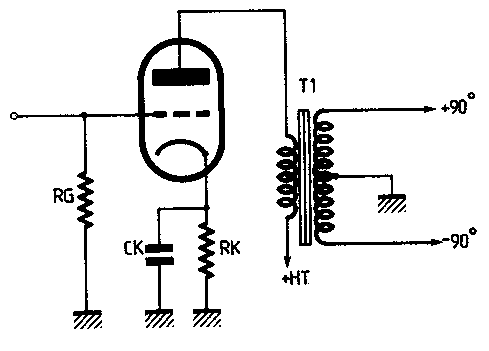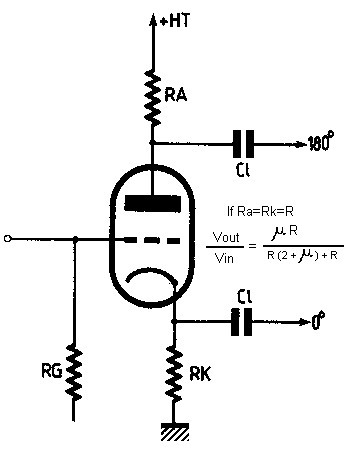
Back to home page
Back to audio electronics page
The cathodyne is the most used phase splitter, probably because it's the simplest and
yet quite effective.
Examples are nearly everywhere on this site.

This is also a common phase splitter. It is also called "cathode coupled".
Examples at EL84 amp or EL34 amp.
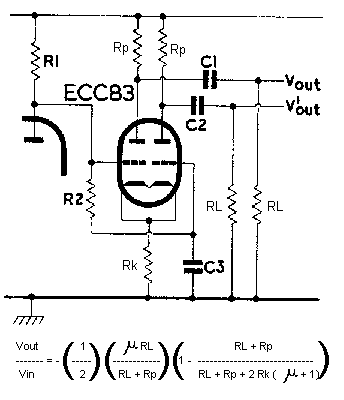
Two triodes are mounted in a differential. The grid of the second tube is decoupled to
the ground through a capacitor.
Examples at KT66 amps or 6550 amps.
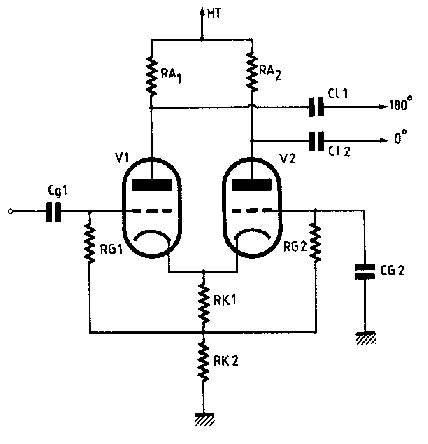
Also known as Van Scoyoc. It needs a low output impedance from the previous stage, that's the reason for the transformer in this schematic.
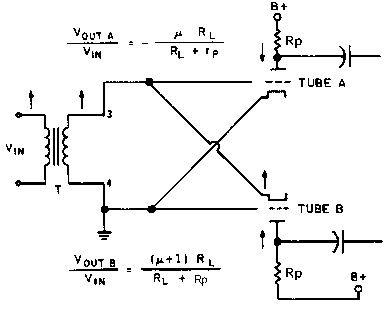
Practically, a transformer is usually substituted by two cathode followers.
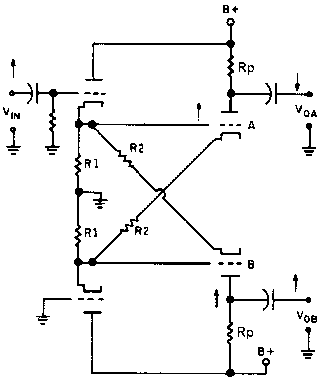
This phase-splitter is also called "anode follower" or "see-saw".
This splitter takes the signal out of the 1st tube, passes it through a voltage divider
and injects it into another tube to obtain the inversed signal.
The second schematic is a simplified version that can be used when the following tubes
have no grid current.
Example at 6V6GT amp.


Schematic by E. F. Worthen (August 1958).
Example at EL34 amp.
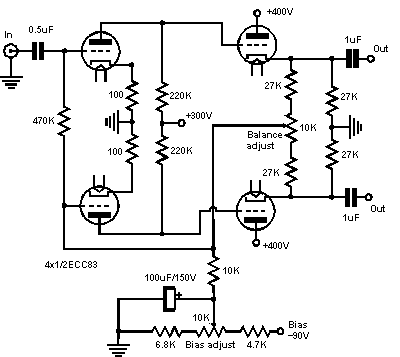
The schematic is self-explanatory, each output connection of the transformer has the
same signal but in phase opposition.
Example at 6AS7 amp.
